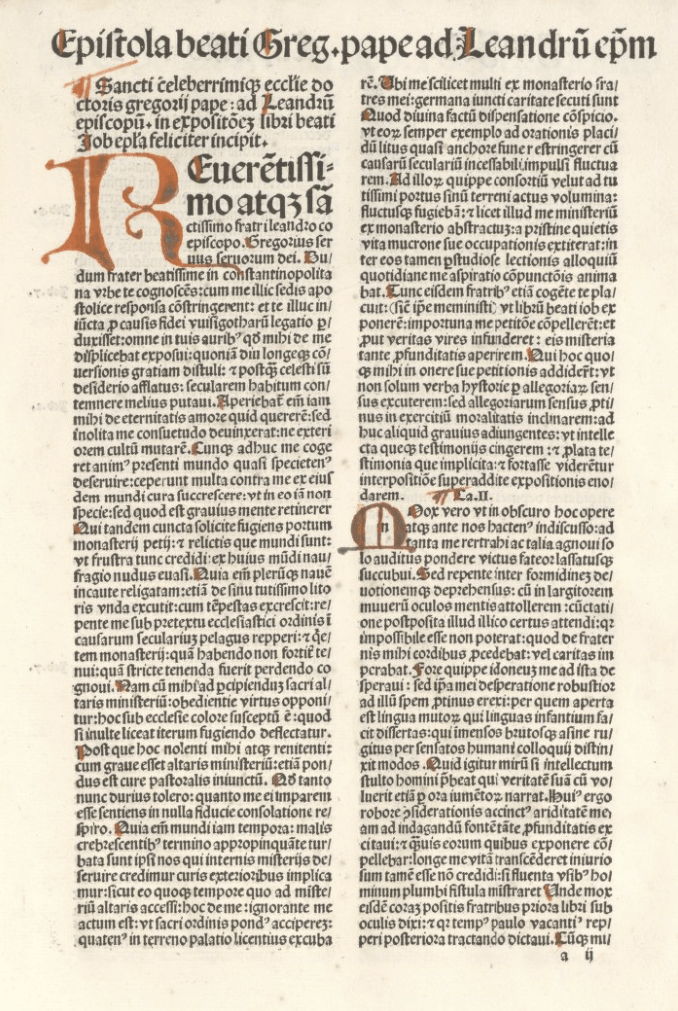
Introducing the work of one of the church fathers: pope Gregory the Great (c. 540–604) and his Moralia sive Expositio in Job (“The Book of Morals or Commentary on the Book of Job”).
Gregory was born into a prominent Roman family and, as a young man, became the prefect of Rome—its highest-ranking judge and the president of the Senate. Around 574, following a period of deep prayer after his father’s death, he resigned from the prefecture to become a monk. He converted his Roman home into a monastery and established six monasteries on the estates inherited from his father in Sicily. Gregory later described the days spent as a humble monk in his home monastery as the happiest of his life. However, this peaceful period was short-lived. In 579, Pope Pelagius II sent him as an envoy to the imperial court in Constantinople, seeking assistance from the Eastern Roman Emperor against the Lombards.
Though his plea for help went unanswered, it was in Constantinople that Gregory began delivering sermons based on the Book of Job to a small circle of ascetics. The Book of Job resonated deeply with Gregory’s contemporaries, living in an age marked by the turmoil of the Migration Period—endless wars, famines, and plague epidemics. The story of Job, a pious man whose faith was tested through extraordinary suffering, provided a powerful parallel to their own struggles. In Moralia, a monumental work comprising 35 books, Gregory interprets the Book of Job on three levels—historical, allegorical, and moral. This threefold approach to interpreting Scripture remained influential throughout the Middle Ages.
Upon returning to Rome from Constantinople in 585, Gregory became the abbot of his monastery. After Pope Pelagius II died of plague in 590, Gregory was unanimously elected pope—the first from a monastic background. During his papacy, he achieved peace with the Lombards and initiated several significant reforms. He established a new Canon of the Mass, defined a new litany, and diligently collected ancient church melodies. This led to a major renewal of church music known as Gregorian chant. He also decreed that marriage was prohibited between individuals related within four generations. Gregory is the patron saint of students, teachers, musicians, singers, and stonemasons, as well as those suffering from gout—the very illness that claimed his own life on 12 March 604, a date known in the Estonian folk calendar as “korjusepäev.”
Though Gregory authored many significant works, his commentary on Job remained his masterpiece. It was immensely popular throughout the Middle Ages, with thousands of manuscripts surviving. The Academic Library of Tallinn University preserves a manuscript fragment of this commentary dated to 1301, which was reused as binding waste. After the invention of the printing press, Moralia was quickly printed, including an incunabulum published by Nicolaus Kesler in Basel in 1496—an early edition held in our collections.
This incunabulum reached our library through the legacy of Reinhold Grist (c. 1480–1551), whose collection entered the library of St. Olaf’s Church. Grist, the son of the Tallinn merchant and alderman Johann Grist, studied at Rostock University and later served as a priest at St. Olaf’s. Following the Reformation, he became a Lutheran pastor. According to Heinrich Bröcker’s 1658 inventory, St. Olaf’s collection contained 44 volumes from Grist’s library (including 12 incunabula), of which 39 survive today.
See the incunabulum in ETERA!
